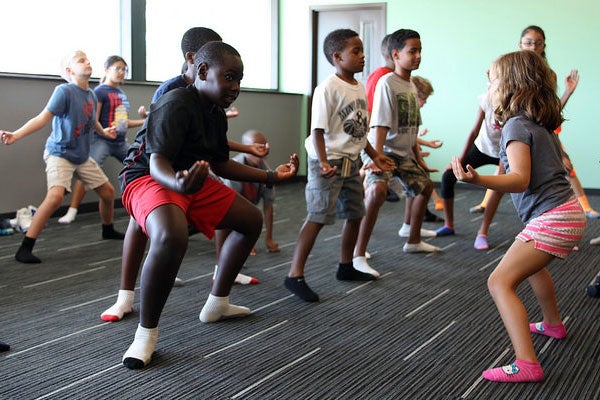
Why yoga belongs in gym class
Published: November 16, 2015
Awkward gym uniforms, regulated fitness tests, being the last one picked – for many high school kids, gym class is anything but fun and games.
But second-year master’s student Holly Howe is looking to change that. Howe spent the summer at Washington State University contributing to a 12-month research project about how introducing yoga into physical education curriculum may influence things like body image, motivation and mindfulness.
The findings are set to be published in early 2016.
Howe was able to seize the opportunity thanks to a grant from the Social Sciences and Humanities Research Council, the Michael Smith Foreign Study Supplements scholarship (which funded a fourth-month research exchange anywhere in the world) and her supervisor, Professor Catherine Sabiston.
Aware of Howe's interest in exploring the physical and mental health benefits of yoga, Sabiston suggested she connect with Professor Anne Cox – an expert in in sport and exercise psychology at Washington State University.
“Cathi has known Anne for quite a while and knew her work well. She got in touch with her, helped set up the connection and then she sent me off!”
When Howe arrived in Washington in April, the study, Testing the Effects of a High School Physical Education Yoga Curriculum, was well underway. The team was exploring whether yoga curriculum might be more effective than tradition phys ed activities at promoting positive body image as well as a love of exercise in high school students who may otherwise avoid gym class.
“We got the sense that many were only taking a fitness class because it was mandatory,” Howe explains. “They had no actual interest in sport."
Throughout those four months, Howe refined her research skills in helping to put the paper together, running the stats and learning more about the academic writing process.
“It was a really great experience to learn writing from someone who isn't your supervisor, to get a different take on it.”
The findings were promising: students had marginally improved body images and were less critical of their bodies, likely because yoga promotes internal awareness over competition.
“This allows a person to appreciate their body for what it can do rather than what it's not doing or what it looks like, comparing it to other people, all that type of stuff,” Howe says. “There are a lot of subtle ways that we could change PE make it a lot more focused on simply enjoying physical activity.”
Along with enriching her understanding of yoga and its potential role in improving gym class, the experience ignited Howe’s interest in field work, especially internationally.
“I’ve noticed changes in my writing and even in how I'm designing studies. U of T made it super-easy to work abroad. In Cathi's lab, she really emphasizes getting out there and trying new things and looking at different research. She's great at forging those connections.
“It's really valuable to get another person's opinion, to get off of campus and out of the city to research in a different setting. It really lets you know what's out there.”



